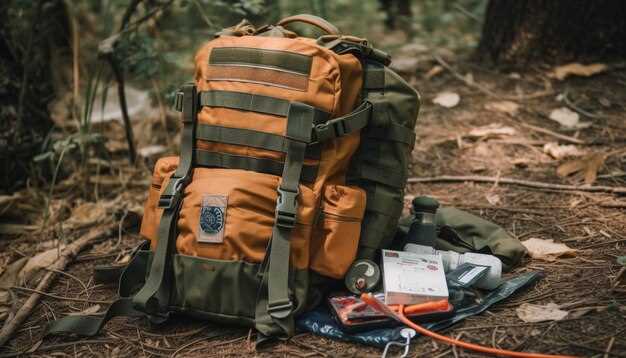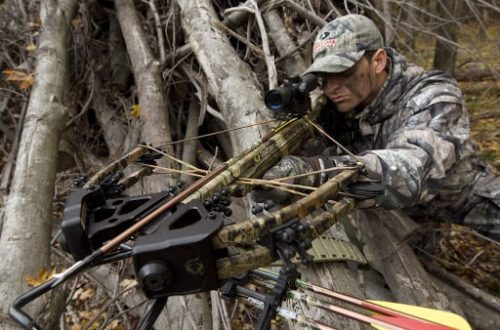
What to pack for a multi-day hunting trip

Embarking on a multi-day hunting trip requires meticulous planning and preparation, especially when it comes to packing. Having the right gear can make the difference between a successful hunt and a frustrating experience in the wilderness. To ensure that you are fully equipped, it is essential to develop a comprehensive pack list tailored to your specific needs and the environment you will be navigating.
Before you start filling your backpack, consider the various factors that influence your packing strategy. The type of hunting you will be engaging in, the climate, and the duration of your trip all play critical roles in determining what you need to bring. A well-organized pack list not only streamlines your preparation but also enhances your ability to respond effectively to unexpected challenges in the field.
In this guide, we will break down the essential items you should include in your packing strategy, focusing on gear, food, and safety provisions. With the right information at hand, you will be well-prepared to tackle the great outdoors and make the most of your hunting experience.
Choosing the Right Hunting Pack for Your Needs

Choosing the right hunting pack is crucial for a successful multi-day hunting trip. The right pack can significantly affect your comfort, efficiency, and overall enjoyment while in the wilderness. To begin, consider the type of hunting you will be doing. Different activities, such as big game hunting or bird hunting, may require different types of gear and consequently different packs.
Size and Capacity: First, assess the load you need to carry. Multi-day trips usually require a larger pack with a capacity ranging from 40 to 70 liters. Make a list of your essential gear and estimate their sizes to select a pack that accommodates all necessary items without being overly large or cumbersome.
Frame Type: There are two main types of frames used in hunting packs: internal and external. Internal frame packs provide better support for heavier loads and allow for greater maneuverability. External frame packs can carry bulkier gear and are generally easier to load and unload, making them suitable for specific hunting styles.
Weight Distribution: A well-designed hunting pack should distribute weight evenly across your back and hips. Look for features such as padded straps, a hip belt, and a load-lifter system to help manage the pack’s weight effectively. This will reduce fatigue during long hikes and allow for a more comfortable experience in the field.
Durability and Weather Resistance: The materials used in your pack can greatly impact its performance. Choose a pack made from durable fabrics resistant to water and abrasion to protect your gear against harsh weather conditions. A right hunting pack should also have reinforced stitching and robust zippers to withstand the rigors of outdoor use.
Accessibility and Organization: Ease of access to gear is essential while hunting. Look for features like multiple compartments, side pockets, and attachment points for quick access to items like scopes and snacks. A well-organized pack will streamline your hunting experience and help you focus on the task at hand.
By carefully considering these factors and making a list of your personal needs, you will be well-equipped to choose the perfect hunting pack that complements your gear and enhances your overall hunting experience.
Essential Gear List for Multi-Day Hunting Adventures
Planning a multi-day hunting trip requires careful consideration of the gear you will pack. The right equipment ensures your safety, comfort, and success while in the field. Below is a comprehensive list of essential items to include in your gear selection.
1. Clothing: Choose moisture-wicking base layers, an insulating mid-layer, and a waterproof outer layer. Don’t forget a sturdy pair of hunting boots, warm socks, and a hat. Layering will help you adapt to changing weather conditions.
2. Shelter: A lightweight tent or hammock can provide protection from the elements. Include a sleeping bag rated for the lowest expected temperature and a sleeping pad for comfort and insulation.
3. Cooking Equipment: Pack a portable stove or grill, lightweight cooking pots, and utensils. Carry dehydrated meals or freeze-dried food for easy preparation. A reliable fire starter or waterproof matches is also essential.
4. Tools: A quality multi-tool or knife is critical for various tasks. Don’t forget a set of game bags and field dressing tools for processing your harvest.
5. Navigation and Safety Gear: Bring a map, compass, or GPS device to avoid getting lost. A first aid kit, whistle, and headlamp with extra batteries can be lifesaving in emergencies.
6. Hydration System: A durable water bottle or hydration bladder is essential for staying hydrated. Consider packing a water filter or purification tablets for safe drinking water.
7. Hunting Gear: Include your weapon of choice–rifle, bow, or shotgun–along with ammunition or arrows. Binoculars and a rangefinder can enhance your scouting abilities.
8. Personal Items: Don’t forget to pack your toiletries, sunscreen, insect repellent, and any medications you require. Personal comfort items like a pillow or a good book can also enhance your experience.
Packing efficiently while ensuring you have all necessary gear will set the stage for a successful multi-day hunting adventure. Remember to adjust your list based on specific needs and the environment you will be in.
Tips for Organizing and Distributing Weight in Your Pack

Proper organization and weight distribution in your pack can significantly enhance your comfort and efficiency during a multi-day hunting trip. Here are some essential tips to consider when packing your gear.
1. Create a Packing List: Before you begin, compile a detailed list of all the gear you plan to bring. This will help you avoid overpacking and ensure that you include only the essentials for your hunting trip. Prioritize items based on necessity and functionality.
2. Place Heavy Items Close to Your Back: Load your heaviest gear, such as your hunting rifle or food supplies, near your spine. This positioning helps maintain your center of gravity, making it easier to carry and reducing fatigue.
3. Distribute Weight Evenly: Balance the load by evenly distributing weight throughout the pack. For instance, if you place a heavy item on one side, counter it with another weight on the opposite side. This helps maintain stability and prevents strain on one side of your body.
4. Use Compression Straps: Many packs come with compression straps that can be used to secure and tighten your gear. This not only helps to stabilize the load but also minimizes bulk, allowing for easier movement through dense terrains.
5. Organize by Frequency of Use: Pack items that you will need frequently, such as snacks, maps, or hunting calls, in easily accessible pockets. Reserve deeper compartments for bulkier, less frequently used gear like sleeping bags and cooking equipment.
6. Utilize External Attachment Points: Harness any external attachment points on your pack to carry additional gear, such as trekking poles or a rolled-up sleeping pad. This keeps these items out of the main compartment, reducing clutter and facilitating easier access.
7. Consider Weight of Your Gear: Before heading out, evaluate the weight of each piece of gear. If you find certain items to be unnecessarily heavy, consider alternatives made from lightweight materials, which can significantly reduce your overall pack weight.
By following these tips for organizing and distributing weight in your pack, you can ensure a more comfortable and efficient experience during your hunting adventure.




